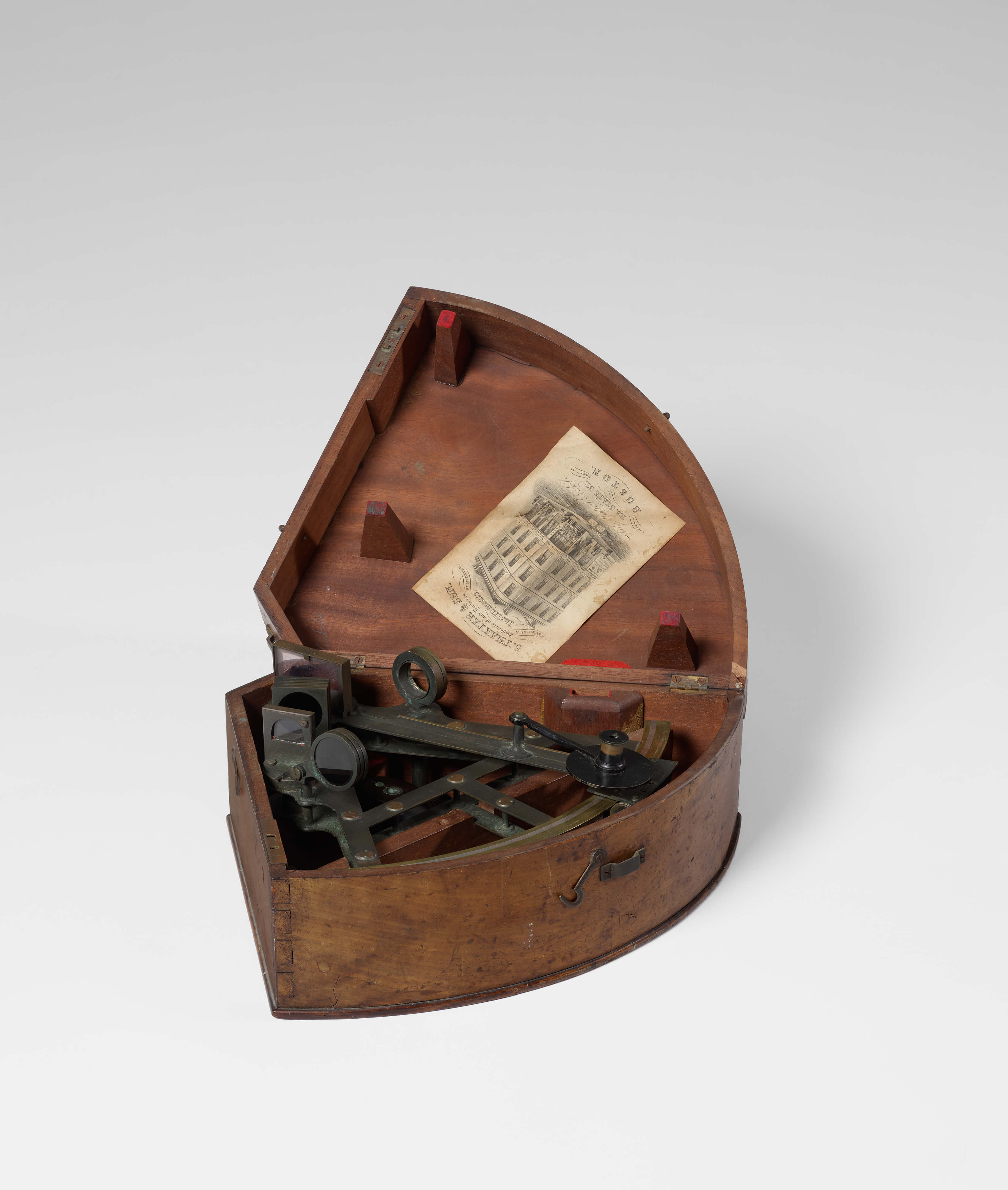
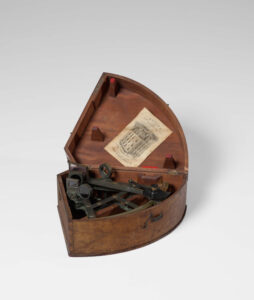
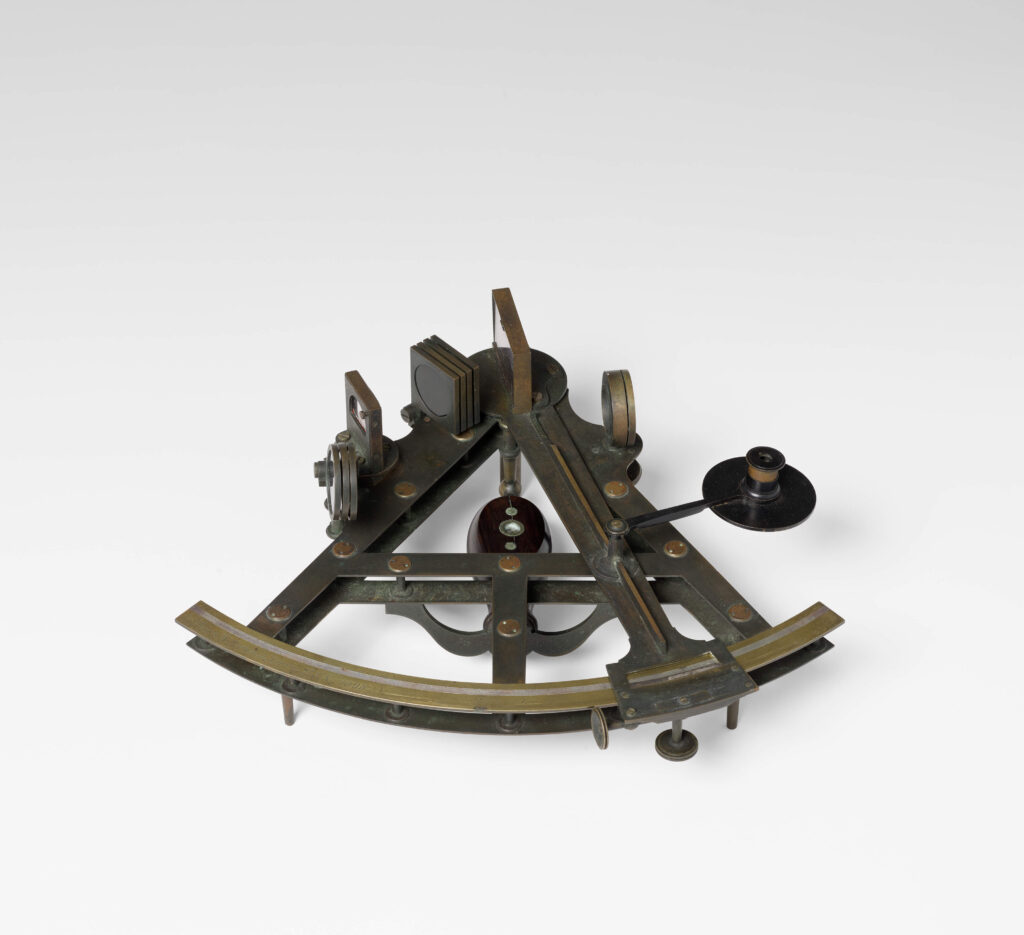
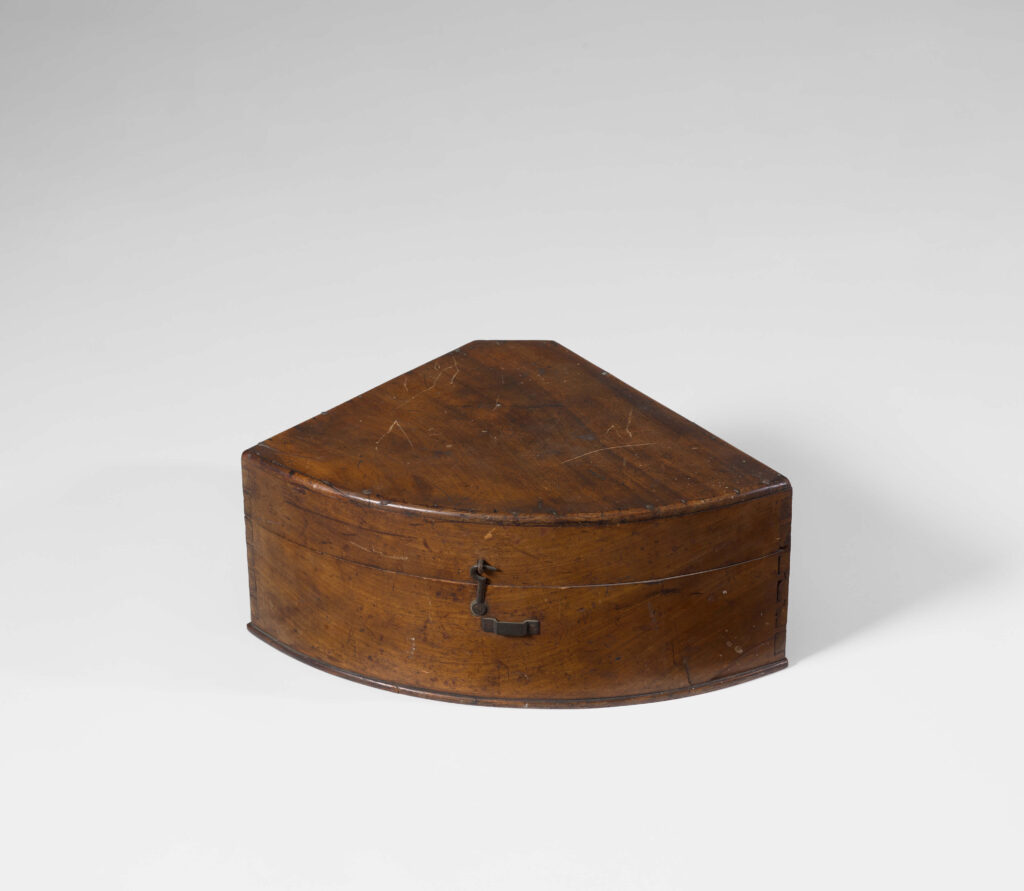
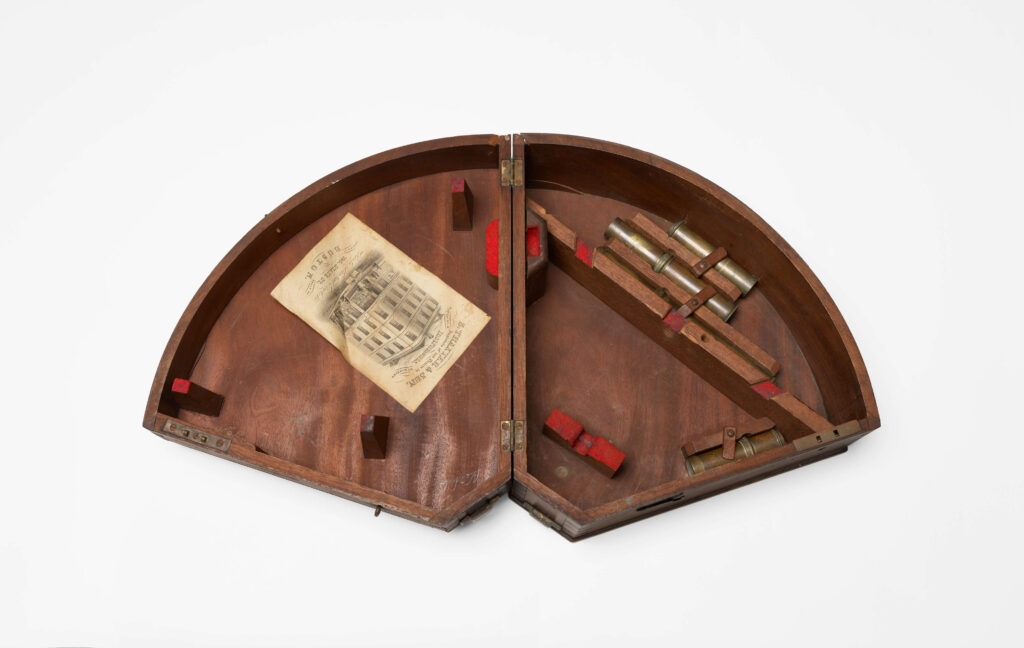
Sextant
This sextant was once used to measure the angle between two visible objects and was a crucial navigational instrument for sailors who relied on celestial navigation to determine their position at sea. It is housed in a wooden box that protects it and its associated lenses from damage.
Several labels on the sextant and the wooden box tell us more about the people who made and used the sextant. A paper label inside the box reads: “S. Thaxter, & Son, Importers and Dealers in Nautical & Surveying Instruments, Charts, Nautical Books, Etc. 125 State St, Boston. Corner of Broad St.” It is accompanied by an engraving of the shop itself. Another paper label reads “Negus Nautical Instruments 69 Pearl Street, New York, N.Y.” S. Thaxter & Son was in business from 1822 until 1919. Negus Nautical Instruments made navigational tools for the U.S. Navy during the same time period and moved its offices to 69 Pearl Street in 1931. The combination of these labels might suggest that the instrument and its case were manufactured by S. Thaxter & Son and later repaired by Negus Nautical Instruments.
An engraving on the sextant itself reads: “Frank W. Nichols, Lieut. U.S.N., 1895 / Troughton, London.” The name Nichols is also written on the inside cover of the wooden box. Nichols began his career in the Navy as a midshipman in 1862, steadily working his way up through the ranks until he was promoted to Lieutenant Commander in 1893. He retired the next year, and died in February 1895.
Creator
S. Thaxter & Son
Date Created
late 19th century
Medium
Pencil, Ink, Paper, Brass, Wood
Dimensions
Sextant: [H] 10 in. [W] 11 in. [D] 4 in. Box: [H] 5.25 in. [W] 13.5 in. [D] 4 in.
Catalog Number
2525.5a,b
Credit Line
USS Constitution Museum Collection. Gift of Roberta Lang on behalf of her brother, Edward Louis Bonacci.
Terms of Use

This work is licensed under a Creative Commons Attribution-NonCommercial-NoDerivs 3.0 Unported License